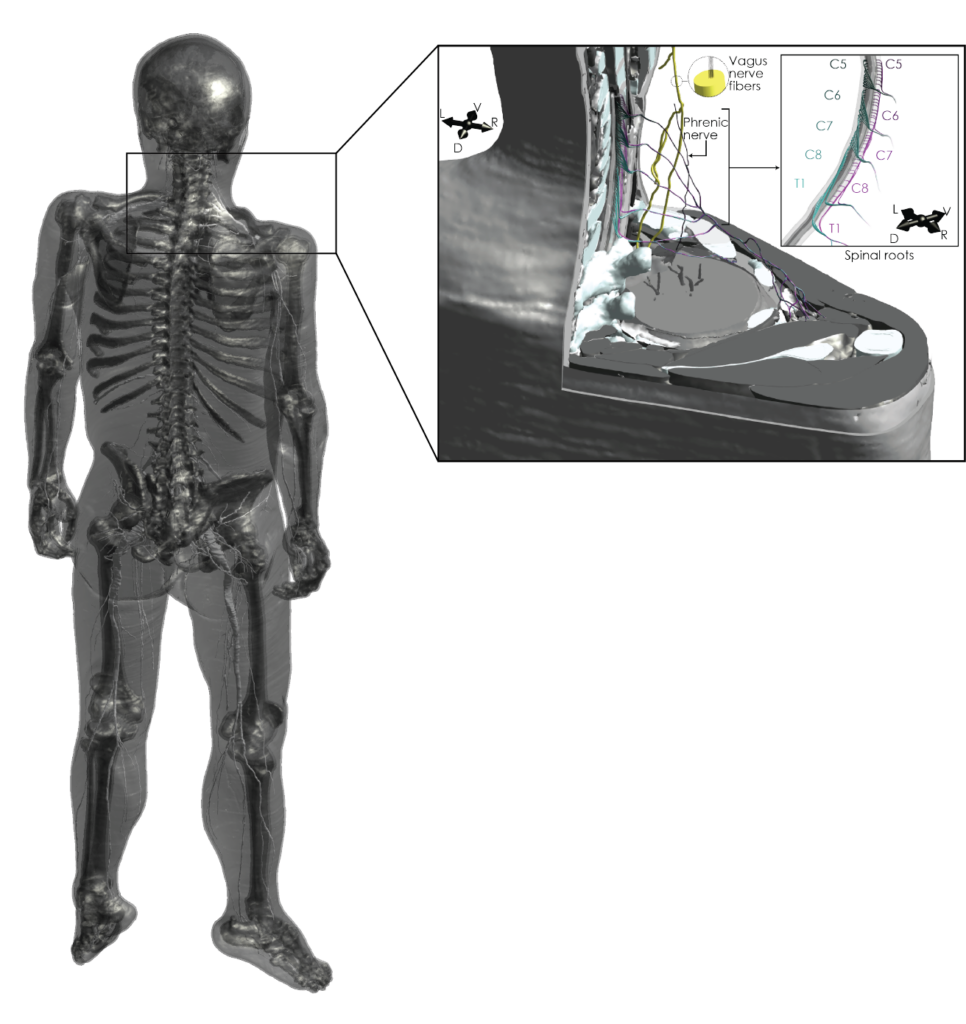Transcutaneous Spinal Cord Stimulation
Transcutaneous spinal cord stimulation (tSCS) is a non-invasive treatment aimed at stimulating spinal circuits to control various physiological functions. There are several prominent examples, including cervical tSCS to facilitate upper limb motor function. Yet, the interactions between tSCS and the neural structures of the spinal cord and surrounding tissues remain largely enigmatic. In the absence of clear mechanistic understanding, different technologies have emerged, varying in key stimulation parameters like electrode placement and pulse shape, with limited comparative analysis of efficacy and safety.
To address this, we are developing methods to efficiently create multi-scale digital twins of the human body, explore the mechanisms underlying tSCS, evaluate the efficacy and safety of existing treatment options, and engineer novel technologies that robustly control diverse physiological functions in large and diverse patient cohorts.
Specific research questions include:
- Defining guidelines for representing anatomical structures and calculating their interactions with tSCS.
- Investigating the impact of stimulation parameters on biophysical interactions and patient outcomes, considering inter-subject variability.
- Understanding interactions between tSCS and other implanted or external medical devices.
- Establishing metrics to evaluate the efficacy and safety of tSCS across different treatments.
- Developing clinically-relevant, computationally efficient workflows to support mechanistic exploration, therapy design, and clinical decision-making.

First Published on September 23, 2024
Last Updated on October 7, 2024 by Abdallah Alashqar